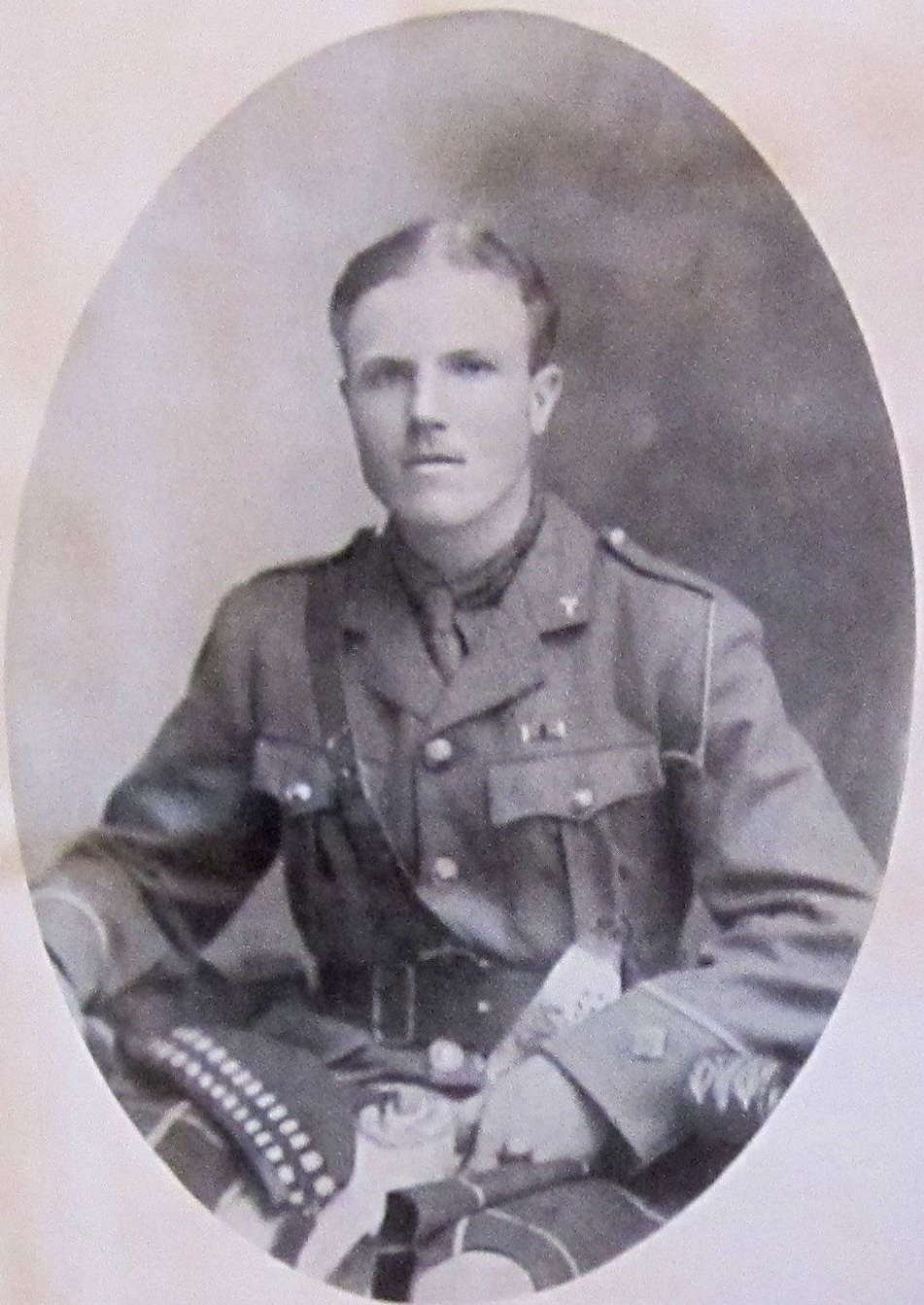Fact file:
Matriculated: 1913
Born: 26 March 1894
Died: 24 May 1915
Regiment: Seaforth Highlanders
Grave/Memorial: Cabaret-Rouge British Cemetery: 17.C.24.
Family background
b. 26 March 1894 in Hampstead, London, as the eldest and only surviving son (of three children) of John Frederick Karl Daman, MA (c.1865–1934) and Rosalind Mary Isabella Daman (née Dell) (1867–1925) (m. 1893). At the time of the 1901 Census the family was living at 42, Kenilworth Park Hill (two servants) and at the time of the 1911 Census it was living in the High Street, Wallingford, Berkshire (two servants). It later moved to “Innisfree”, Goring-on-Thames, Oxfordshire, and Kenilworth, Carshalton, Surrey.
Parents and antecedents
Daman’s family was not wealthy. His grandfather, Dr Karl Christopher Ludwig Dam[m]ann (c.1827–90), was a German national who had been born in Hanover, married (1861) Marianne Bayly (c.1834–1917), the daughter of a Plymouth solicitor, and became Professor of German at Mason Science College, Birmingham (founded 1875, incorporated into Birmingham University 1900).
Daman’s father was the eldest of five sons: he matriculated as Dammann at Lincoln College, Oxford, graduated in 1888 with a 4th in Modern History, took his MA as Daman, and then became a solicitor.
Daman’s mother was the daughter of Reverend Robert Dell (1840–1911) one time Fellow of Corpus Christi College Cambridge and a master of Marlborough College, Vicar of South Baddesley, Hampshire.
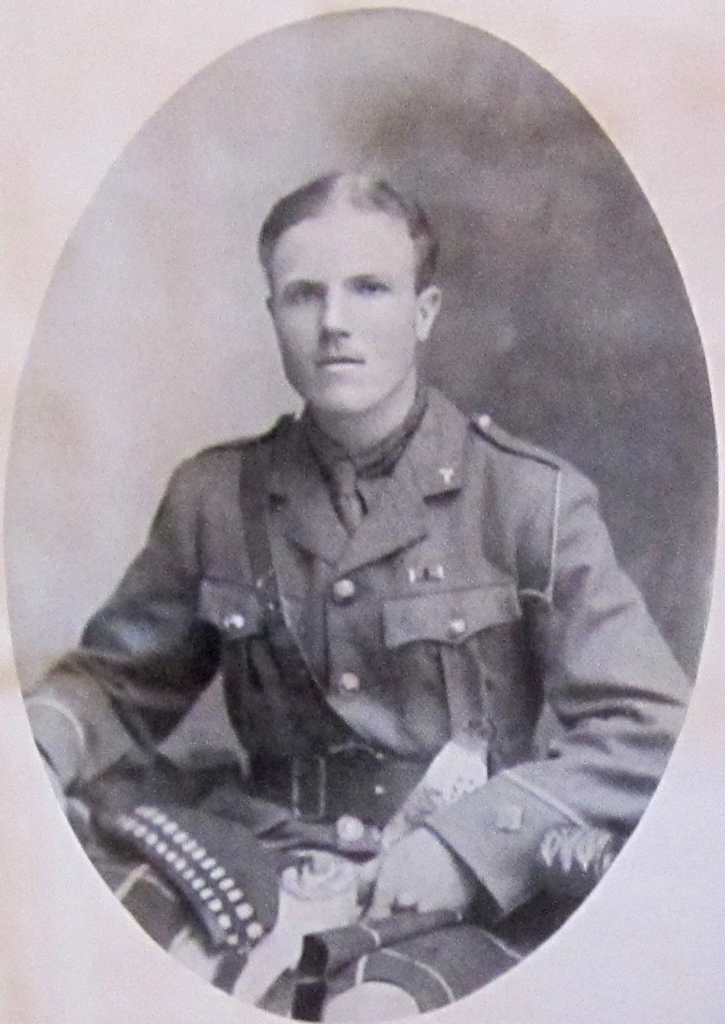
Geoffrey Windeatt Daman. He is wearing the 1902 Edward VII Coronation Medal.
(Photo courtesy of Magdalen College, Oxford).
“He fell as a British soldier in a great and good cause, and we must try and bear our losses as bravely as those who have fallen would have us do. The consciousness that he did his duty and served his country so well should be an encouragement to you; but it is the Lord alone that can give the comfort and consolation that parents and friends need in these trying times. This I hope He will grant to you.” (Letter of condolence of 24 May 1915 to Daman’s parents from the Revd John Macleod, Chaplain of the 4th Seaforth Highlanders.)
Siblings and their families
Brother of:
(1) Katherine Mary Windeatt (b. 1897); later Fergusson after her marriage (1926) in Lima, Peru, to Henry Charlton Fergusson of Bolivia; (2) John Basil Windeatt (1899–1908).
Education
Having sung in the Westminster Abbey Choir at the Coronation of Edward VII on 26 June 1902, for which he was awarded the Coronation Medal, he gained a Choral Scholarship in the same year to St George’s School, Windsor (founded 1382, became a preparatory school 1872), where he played football and cricket for the School’s First XIs and became leader of the Royal Choir. After leaving in December 1908 he attended Repton School, Derbyshire, from 1909 to 1913, where, judging from his Housemaster’s book, it took him some time to find his feet and gain any recognition. Between November 1909 and September 1910 his Housemaster’s reports dwell on his taciturnity, lack of vigour and commitment, and unrevealed potential. But once he got into the VI Form, his performance began to improve, and in March and June 1911 we read: “Seems to be coming out a good deal” […] and “Excellent report. Promises well.” In February 1912 the report reads “Goes on admirably” and in December 1912 “Doing excellently. Very good abilities.” In his two final terms at Repton he became the Editor of The Reptonian, a School Prefect and a Colour-Sergeant in the Officers’ Training Corps. His obituary in The Reptonian would describe him as “intellectually one of the ablest and most promising boys turned out by the school in recent years”; it also recorded that he was “keenly interested in Art, Music and English Literature”, that his paper on Chesterton was judged “about the best ever read to our Literary Society by those who heard it” and that his prize poem entitled ‘Gardens’ “showed remarkable promise”.
After leaving school, Daman spent six months in Germany before matriculating as a Demy in Modern History at Magdalen on 14 October 1913, where he was exempted from Responsions as he had an Oxford & Cambridge Certificate and a qualification in Ancient Greek. After passing both parts of the First Public Examination (Divinity and Literature) in Hilary Term 1914, he began to read for an Honours Degree in Classics (Litterae Humaniores) as “his interests were quite as much in Philosophy and what are called ‘Greats subjects’ as in those of the Modern History School”, but at the end of Trinity Term 1914 he left without a degree. During his time at Oxford, Daman was a member of the Junior Army and Navy Club; he was also a founder member and the Honorary Secretary of the Georgian Club, one of whose senior members wrote a letter of condolence to Daman’s father on 29 May 1915 in which he said:
I was immensely struck by his ‘sanity’ and cleanness of outlook. We owed him a great deal in the Club, and more particularly since [sic] there were many rocks upon which the Club might have foundered. I think I may safely say that he was the meeting point between two very opposite parties; and it was due to his absolute straightforwardness and courtesy that this was possible.
On the same day, Christopher Cookson, Magdalen’s Senior Tutor, also wrote to Daman’s father and included a comment on Daman that he had heard from another Magdalen undergraduate: “Had he been here a little longer he would have been the friend of everyone in the College. There are very few men in any one generation of whom that can be said.”
President Warren wrote of him posthumously: “He had a fine physique and might have made a good oar.” When Daman made his will, he was living in Wallingford, presumably with his parents.
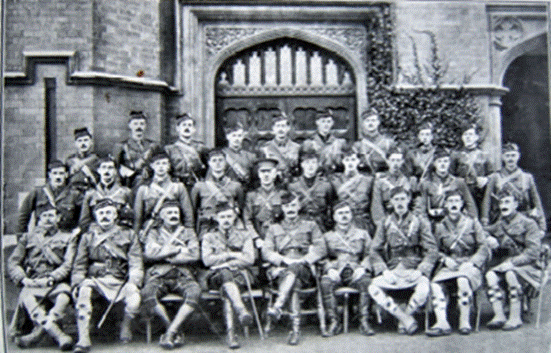
This photo (copyright © 2006 World War One Photos) was taken at Bedford on 5 November 1914 and first published in The War Illustrated on 5 November 1914, just before the 4th Battalion of the Seaforth Highlanders left for the front. Daman is second from the right (standing) in the second row.
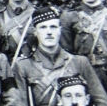
Detail from the above photograph.
War service
During his year at Oxford, Daman was in the Artillery Section of the Oxford University Officers’ Training Corps and he was initially commissioned Second Lieutenant in the 4th Battalion of the Princess Charlotte of Wales’s (Royal Berkshire) Regiment (Territorial Forces) on 25 August 1914 (London Gazette, no. 28,879, 25 August 1914, p. 6,706). Then, on 12 September 1914, he transferred to the 4th Battalion (Territorial Forces) of the Seaforth Highlanders (Ross-shire Buffs, The Duke of Albany’s) (LG, no. 28,899, 11 September 1914, p. 7,231), when the Battalion was at Bedford as part of 152nd (1st Highland) Brigade, in the 51st (1st Highland) Division.
The Battalion left for Southampton on 5 November, disembarked at Le Havre two days later as the first Highland Territorial Forces unit to cross to France, and then travelled by train to St-Omer and Ecques, where it trained from 10 to 21 November. On 12 December the Battalion became part of the 19th (Dehra Dun) Indian Infantry Brigade, 7th (Meerut) Division, and then, on 16 December, proceeded via Arcques to Vieille Chapelle, where it arrived on 18 December. The Battalion had a brief experience of life in the trenches from 21 to 24 December, continued its training until 14 January, and then, after moving via Béthune and St-Vaast, took up position in the trenches at Château Ferfay, near Richebourg l’Avoué, from 17 to 21 January. It must have been about then that Daman became Bomb Gun Officer and second-in-command of the Brigade’s Mortar Section at a time when the importance of the Stokes Mortar, invented in January 1915, was increasing. From 23 January until the Battle of Neuve Chapelle (10–13 March), the Battalion spent periods in and out of the trenches in the area of Calonne, Richebourg l’Avoué, Richebourg St-Vaast and Vieille Chapelle. But during the initial stages of the Battle itself, the Battalion was pulled back south of the River Layes but then, at 16.00 hours on 11 March, it was ordered to attack forwards towards the Bois de Biez; it suffered 187 casualties killed, wounded and missing, and withdrew at 18.00 hours.
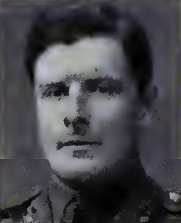
Geoffrey Windeatt Daman, The War Illustrated, vol. IV: The Summer Campaign – 1915 (London: The Amalgamated Press, 1916), p. 1,431
The Battalion spent the period between the Battle of Neuve Chapelle and the Battle of Aubers Ridge (9–13 May) in the area of Lacouture, Pont du Hem and Richebourg St-Vaast. When the Battle opened on 9 May, the artillery bombardment began at 05.00 hours, and at 05.40 hours, three battalions of the Dehra Dun Brigade, with Daman’s Battalion in the centre, opposite La Tourelle, climbed out of their trenches company by company. But the attack was met with such devastating machine-gun fire from the German positions in the Bois du Biez to the left, only 80 yards away, that within 20 minutes the Brigade had lost 37 officers and 856 casualties killed, wounded and missing, with Daman’s Battalion alone losing 3 officers and 216 men. As no objectives had been or were anywhere near being taken, Daman’s Commanding Officer (CO) ordered everyone to take cover. At 07.45 hours, the depleted Brigade, with two companies of the 9th Gurkhas supporting Daman’s Battalion, was ordered to attack again. The same thing happened again and the Gurkhas suffered particularly devastating losses. Daman’s Battalion was finally relieved at 23.00 hours and went into billets at Rue du Bois.
On 23 May, the Battalion moved from the Rue du Bois into trenches to the north of Richebourg l’Avoué, along the south-west–north-east Rue du Bois, which had been captured so recently that some parts of them were still in enemy hands. They were known as “The Glory Hole” and the Battalion’s War Diary explain why: “The trenches […] are very objectionable. There are numbers of dead between the two lines, and the sun has a marked effect on them. At times the smell was well-nigh unbearable.” At this time, Daman was in 4 Company, whose part of the line was a listening post in a sector of the trench that was later known as “The Boar’s Head”.
Daman was killed in action here, aged 21, at 19.40 hours on 24 May 1915, when he was shot through the head by a sniper while visiting his men in a newly captured, and therefore dangerous, stretch of the front line. His CO later said: “He was one of the best officers in the Battalion and a very fine fellow.” On 29 May 1915, Lieutenant-Colonel David Mason MacFarlane (later CMG, CBE, TD) (1862–1930), the CO of the 4th Battalion, the Seaforth Highlanders, and a medical doctor by profession, who had been wounded at Neuve Chapelle in March 1915 and was recovering from his wound in England, wrote a letter of condolence to Daman’s mother after reading Daman’s obituary in The Times. As it is far more frank, deeply felt and moving than most of such letters, which were often formulaic because they were written under pressure at the front by tired, overworked, and battle-hardened COs and Adjutants, it is worth quoting in full:
My dear Mrs. Daman,
I was staggered by the notice in today’s Times. It was the first I had heard of your terrible loss, and I do send you all my most true, sincere, and heart-felt sympathy. It is too cruel, and I cannot realize that that splendid young life is over. He was an exceptionally brave and gallant boy, and he was most keen to take on his work as Bomb Gun Officer. The last time I saw him was on the morning of March 10th, the first day of the battle of Neuve Chapelle, and he was standing in his trench, near his guns, looking the picture of health and strength. His work was dangerous, but not more so than leading a company in the attack, and as he had escaped through our two worst fights, I felt he must be doing very well and hoped against hope he was not so dangerously placed as with his Company. If he had been spared I am sure he would have done very, very well in his profession. He knew no fear, and whatever he had to do, he did it with his whole heart and soul. I am dreadfully sorry that he has fallen and from my heart I feel for you one and all.
This awful carnage is terrible, and as you know, my only two children are in the Front line, so that I feel doubly for you all in your irreparable loss. I know no details of how he met his fate, but I do know this, from my knowledge of him, during the eight months I had the great pleasure of having him with me, that his end was that of a true and brave and gallant soldier. He never thought of himself, and was always ready, anxious, and willing to do anything to help anybody.
Again, Mrs. Daman, from my heart I send you all my most true and sincere sympathy. This has been a most dreadful week of sadness, and it seems always the youngest and most brilliant and best of our lads that are taken.
I am, yours very sorrowfully,
David M. MacFarlane.
On 19 June 1915 Daman was promoted Lieutenant with effect from 12 May.
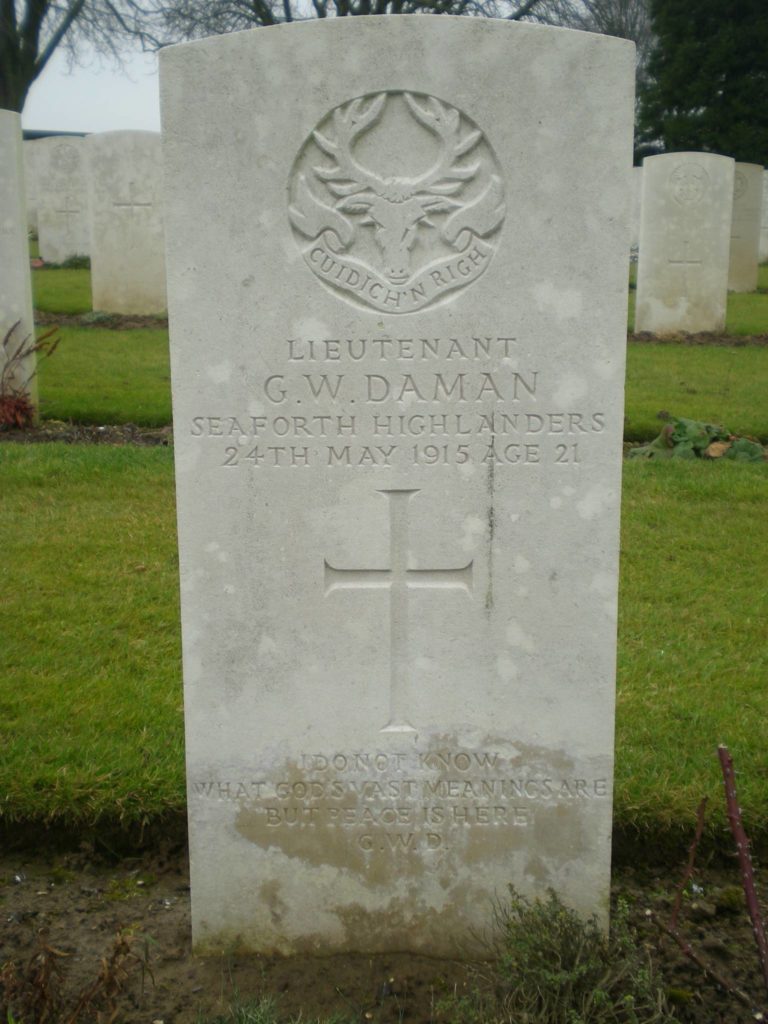
Cabaret-Rouge British Cemetery, Souchez; Grave 17.C.24
Daman was buried first in the Military Cemetery at Vieille Chapelle, next to his friend Lieutenant Arthur Temple Railton, BSc. (1890–1915; killed in action 9 May 1915); then, also next to Railton, in Cabaret-Rouge British Cemetery, Souchez; Grave 17.C.24. The grave is inscribed: “I do not know what God’s vast meanings are, but peace is here. G.W.D.” In late February 1916, Daman’s father sent C.C.J. Webb a copy of A Few Verses, a privately printed book of verses written by his son. Daman left £549 6s.10d.
Bibliography
For the books and archives referred to here in short form, refer to the Slow Dusk Bibliography and Archival Sources.
Special acknowledgements:
*Hancock, Edward (2005); pp. 72–8.
Printed sources:
[Anon.], ‘Second Lieutenant Geoffrey Windeatt Daman [obituary]’, The Times, no. 40,867 (29 May 1915), p. 9.
[Anon.], ‘The Fallen’ [including an obituary of Daman], The Reptonian, 40, NS no. 281 (June 1915), pp. 157–8.
[Thomas Herbert Warren], ‘Oxford’s Sacrifice’ [obituary], The Oxford Magazine, 33, no. 22 (4 June 1915), p. 352.
[Anon.], Second Lieutenant Geoffrey Windeatt Daman: 4th Seaforth Highlanders [pamphlet of 8 pp. containing transcripts of letters of condolence to Daman’s parents] (c. June 1915). Copy in MCA: PR32/C/3/344.
Dugald MacEchern, The Sword of the North: Highland Memories of the Great War (Inverness: Robert Carruthers & Sons, 1923), pp. 360–75.
Haldane (1928), p. 118.
Clutterbuck, ii (2002), pp. 117–18.
Archival sources:
MCA: PR32/C/3/342-344 (President Warren’s War-Time Correspondence, Letters relating to G.W. Daman [1915]).
MCA: Ms. 876 (III), vol. 1.
OUA: UR 2/1/82.
WO95/3940.
WO95/3941.
Books by Geoffrey Windeatt Daman:
G. W. Daman, A Few Verses (no publisher, privately printed in 1915) (Magdalen College still owns a copy of this very rare publication).
